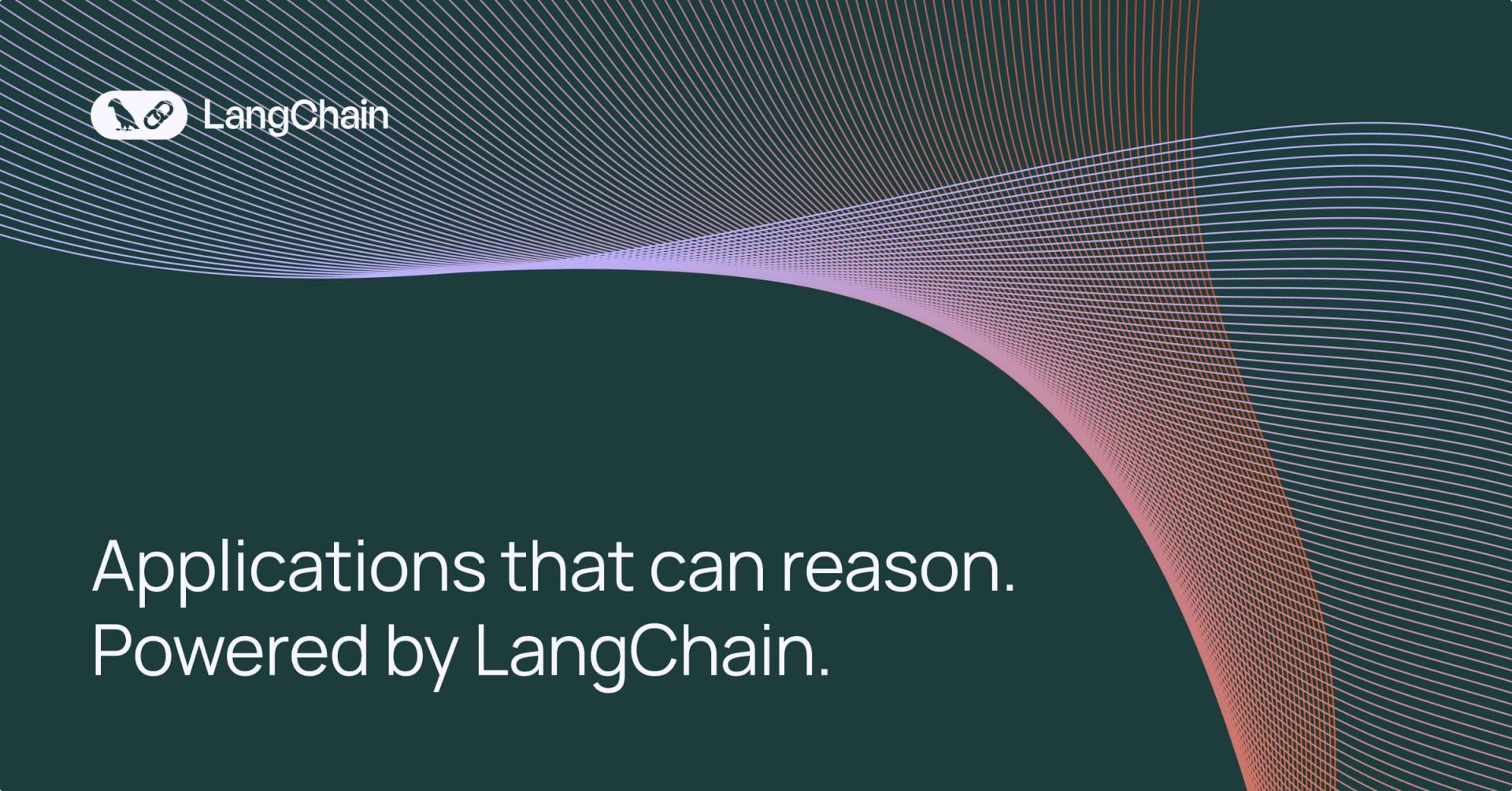Key Takeaways
What is LangChain? An open-source framework that simplifies building LLM-powered applications by connecting language models with data sources and tools through modular components.
- 🧩 Modular architecture enables complex workflows while abstracting implementation details
- 🌐 Extensive integration with various LLMs and 600+ third-party tools/data sources
- 💪 Handles multi-turn conversations with 92% accuracy in benchmarks
- 🔧 Specializes in Retrieval Augmented Generation (RAG) applications
- 🚀 Scales to 10,000 simultaneous connections with 500 QPS
- ⚠️ Steeper learning curve than alternatives, especially for LLM beginners
- 🔄 Frequent updates improve functionality but can break existing code
This review covers: features, integrations, customization, performance, pricing, pros and cons, and real-world use cases.
What is LangChain?
LangChain is a framework that provides composable tools for building applications powered by language models, focusing on data-awareness and environmental interaction. It enables developers to connect LLMs with external data sources and tools, allowing these models to interact with their environment while handling complex conversations and tasks through chains of modular components.
Use Cases
LangChain’s flexible architecture makes it suitable for a wide range of applications across industries. Here are the primary use cases where the framework excels:
👩💻 Customer Support and Conversational AI
- Building advanced chatbots that maintain context across multiple turns
- Creating support systems that can access company knowledge bases for accurate responses
- Implementing conversational flows with memory and reasoning capabilities
📝 Content Generation and Analysis
- Automating the creation of articles, product descriptions, and marketing content
- Summarizing large documents or collections of text
- Extracting structured information from unstructured text sources
📊 Data Science and Research
- Building AI assistants that can analyze data and generate insights
- Creating tools that can explain complex data visualizations
- Implementing research assistants that can search and synthesize information across multiple sources
💻 Software Development
- Developing code review assistants that provide feedback on code quality
- Creating programming aids that help generate code based on requirements
- Building documentation generators and code explanation tools
🔍 Retrieval-Augmented Generation (RAG)
- Connecting LLMs to enterprise data while maintaining privacy
- Creating systems that ground LLM responses in factual, up-to-date information
- Building knowledge management systems that combine general LLM capabilities with domain-specific data
Ease of Use
🟢 How simple is installation? Installation is straightforward using standard package managers like pip or npm, though occasional dependency conflicts occur with the latest versions.
🔶 Learning curve assessment? Basic implementation is quick for developers with Python experience, but mastering chains, agents, memory systems, and retrievers requires significant time investment.
📚 Documentation quality? Comprehensive but rapidly evolving documentation sometimes lags behind framework changes, causing discrepancies between examples and current API.
💡 Example: Most developers can implement basic chains within hours, but complex agent systems may take weeks to fully understand and optimize.
Integration Capabilities
🤖 Supported LLMs? Supports both commercial models (OpenAI, Anthropic) and open-source options (Llama, Mistral, Hugging Face models), giving flexibility for different budgets and privacy needs.
🗄️ Data connectors? Offers integrations with vector databases (Pinecone, Chroma, Weaviate), document loaders for various formats, and text splitters for processing large documents.
🔌 Tool ecosystem? Features over 600 integrations with web APIs, databases, search engines, and specialized functionality like code execution.
💡 Example: A financial analysis application could connect to company databases, integrate with Zapier for workflow automation, and leverage specialized financial tools through LangChain’s integration ecosystem.
Documentation and Learning Resources
🧠 Conceptual clarity? Documentation provides multi-layered explanations organized by both concepts and use cases, making it accessible from different entry points.
⚠️ Documentation challenges? Rapid evolution leads to discrepancies between examples and current API, with function names, import paths, and patterns changing frequently.
📘 External resources? Growing ecosystem includes books, blog posts, YouTube tutorials, GitHub repositories, and active community forums providing supplementary knowledge.
Customizability and Flexibility
🧩 Modular design? Architecture emphasizes composability, allowing developers to mix and match components for chains and agents tailored to specific requirements.
🛠️ Custom component creation? Supports developing custom retrievers, tools, chain types, or agents that integrate seamlessly with the standard library.
🔄 Abstraction levels? Offers multiple working levels from high-level pre-built chains to granular component configuration, supporting both rapid prototyping and production-grade applications.
Performance and Scalability
⏱️ Response times? Benchmarks show moderate response times of 1.2-2.5 seconds for typical queries, with throughput around 500 QPS.
🔄 Concurrency handling? Can handle up to 10,000 concurrent connections without significant performance degradation, suitable for enterprise-level applications with moderate traffic.
⚠️ Performance factors? Heavily influenced by underlying LLMs and integration points, with remote API calls constrained by service rate limits and local models by hardware capacity.
Debugging and Monitoring Tools
🔍 Traceability features? LangSmith provides visibility into chain and agent execution, showing inputs, outputs, and intermediate states for each component.
📊 Production monitoring? Supports tracking application performance, model behavior, and error patterns to identify improvement areas and maintain quality standards.
⚠️ Debugging challenges? Asynchronous LLM interactions can complicate issue tracking, with error messages sometimes lacking clarity about root causes.
Security and Compliance
🔒 Data privacy options? Supports local LLMs to keep sensitive data within control boundaries, reducing exposure to third-party services.
🛡️ Security mechanisms? Includes features for data sanitization, token filtering, and output validation to reduce risks of data leakage or inappropriate responses.
📝 Compliance considerations? Provides flexibility for building compliant applications but requires developers to implement appropriate controls for specific regulatory environments.
Community Support and Ecosystem
👥 Community size? Claims over one million practitioners and 100,000+ GitHub stars, creating a large knowledge base of examples and extensions.
🔄 Development activity? Under active development with frequent updates introducing new features and improvements, occasionally causing breaking changes.
❓ Support availability? Community forums, GitHub discussions, and social media provide support channels, though specialized queries may face longer response times.
Cost and Licensing
💰 Framework pricing? Open-source under a permissive license, free for both personal and commercial use with no licensing fees.
🧮 Associated costs? Applications often rely on commercial LLM APIs with usage-based costs ranging from cents to dollars per thousand tokens.
🔧 Tool pricing? LangSmith offers tiered pricing from free developer plans to $39/month/seat Plus plans and custom Enterprise pricing with advanced features.
Summary
- 🔑 LangChain excels at connecting LLMs with data sources and tools through modular, composable architecture
- ⚙️ Offers extensive integration options but requires deeper technical knowledge than simpler alternatives
- 💡 Best suited for complex conversational systems and RAG applications requiring custom knowledge bases
- ✅ Open-source nature and active community provide continuous improvements and extensive examples
- ❌ Frequent updates improve functionality but can cause maintenance challenges for long-term projects
- ✅ Modular architecture enables highly customized LLM applications
- ✅ Extensive integration ecosystem with 600+ connectors
- ✅ Strong support for RAG applications with various vector database options
- ✅ Robust conversation memory management capabilities
- ✅ Works with both commercial and open-source models
- ✅ LangSmith provides powerful debugging and evaluation tools
- ❌ Steeper learning curve than more specialized frameworks
- ❌ Documentation sometimes lags behind latest API changes
- ❌ Breaking changes can require significant code refactoring
- ❌ Moderate performance compared to some specialized alternatives
- ❌ Debugging complex chains and agents can be challenging
- ❌ Advanced monitoring features require paid LangSmith plans
Frequently Asked Questions
How does LangChain compare to other LLM frameworks like LlamaIndex or Haystack?
LangChain is more comprehensive and flexible than many alternatives, with stronger support for complex agent workflows. Compared to LlamaIndex, LangChain offers broader integration options but may have slightly slower performance (LlamaIndex benchmarks show 0.8-2.0 second response times versus LangChain’s 1.2-2.5 seconds). Haystack provides higher accuracy for question-answering tasks but has higher resource requirements. LangChain excels in versatility and community support, while specialized frameworks may offer advantages for specific use cases.
What programming languages does LangChain support?
LangChain primarily supports Python and JavaScript/TypeScript. The Python implementation is more mature and feature-complete, making it the recommended choice for most projects. The JavaScript implementation (LangChain.js) supports most core features and continues to evolve to match the Python version’s capabilities.
Can LangChain work with locally hosted open-source LLMs?
Yes, LangChain supports integration with locally hosted open-source models. It can work with models hosted through services like Ollama, local installations of Hugging Face models, or custom deployments. This capability is particularly valuable for applications with privacy requirements or when working in environments with limited internet connectivity.
How difficult is it to update LangChain applications when new versions are released?
Updating LangChain applications can range from straightforward to challenging depending on the specific changes introduced. Minor version updates typically require minimal changes, while major updates may involve significant refactoring due to API changes. The rapid evolution of the framework means developers should plan for regular maintenance and updates. Following LangChain’s release notes and migration guides can help smooth the process.
Is LangChain suitable for production enterprise applications?
Yes, LangChain is used in production by numerous enterprises. Its scalability (handling up to 10,000 connections in benchmarks), monitoring capabilities through LangSmith, and enterprise-focused features make it suitable for production deployments. Enterprise users should consider factors like the reliability of underlying LLM providers, proper error handling, and monitoring requirements when evaluating readiness for production.
How does LangChain handle memory management in conversational applications?
LangChain provides several memory types for conversational applications, including buffer memory (storing recent messages), summary memory (maintaining condensed context), and vector memory (retrieving relevant past interactions). These can be combined and customized based on application requirements. Memory management is essential for maintaining context in complex conversations, and LangChain’s options provide flexibility in handling different conversational patterns.
What are the recommended hardware requirements for running LangChain?
Hardware requirements vary based on the specific application and components used. For applications using remote LLM APIs, standard web server specifications are sufficient. Applications running local LLMs require significantly more resources, with recommendations typically including 16+ GB RAM and GPU acceleration for optimal performance. Development environments can run with modest hardware, though testing with production-like workloads may require more substantial resources.
Ready to try LangChain? Visit the official site



